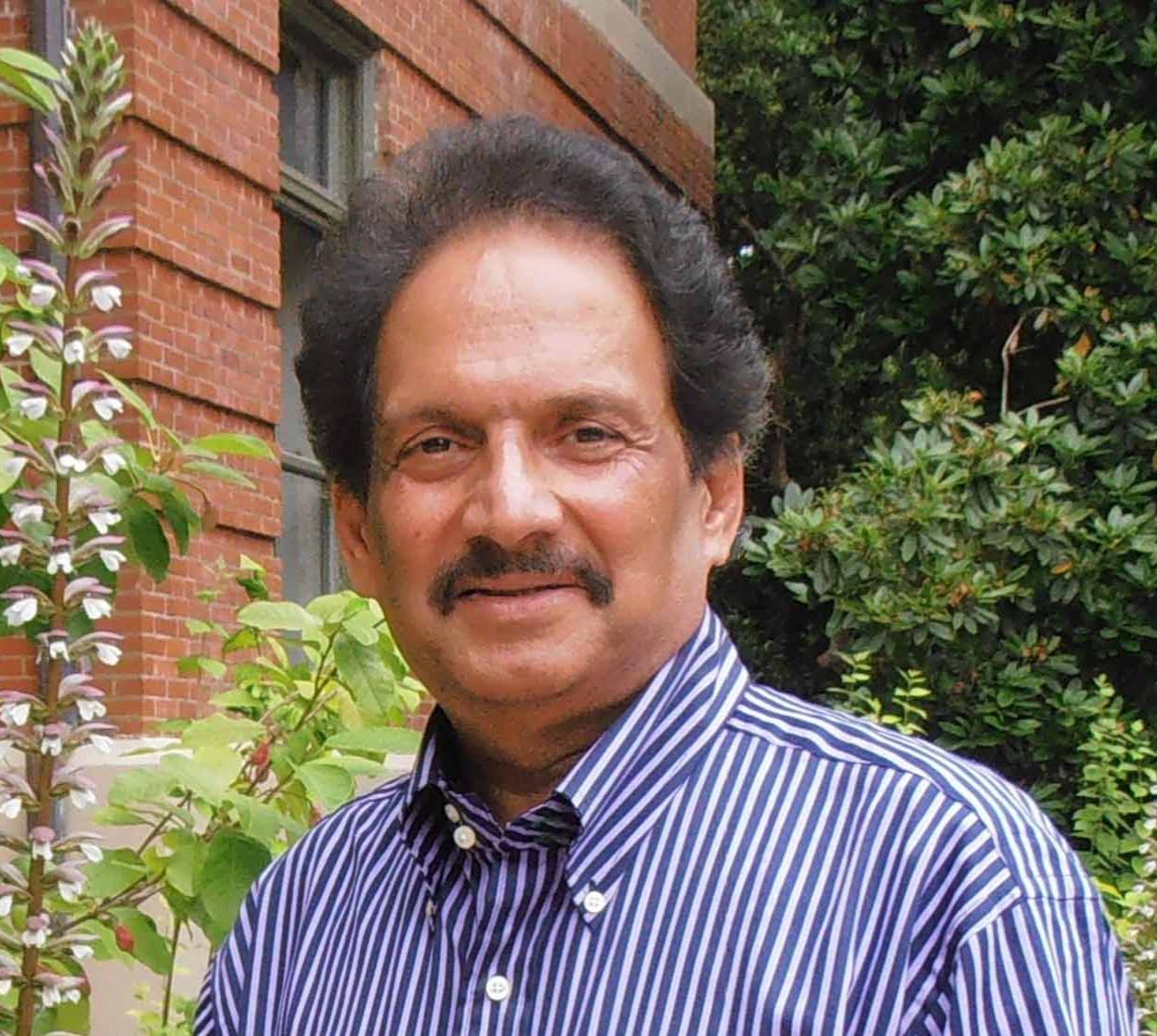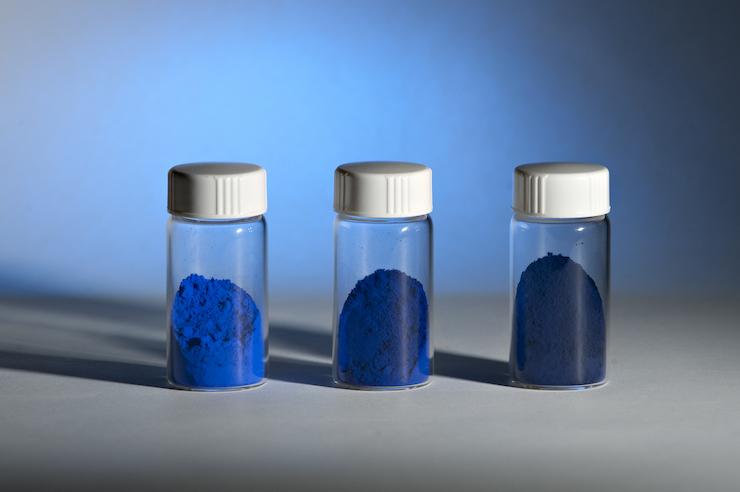Mas Subramanian’s wonder for science began at a young age. He remembers marveling at the great scientists, including Linus Pauling, Oregon State University’s most famous scientist.
Now, more than 40 years later, that same university recognizes the outstanding contributions of Subramanian, the Milton-Harris Professor of Materials Science and an internationally recognized chemist and scholar, by naming him distinguished professor.
“It is such an honor for me to join the ranks of distinguished professors within academia after a long career in industry,” said chemist Mas Subramanian. “I am grateful for the opportunity to work with incredible students. It has been an amazing ride so far and being named a distinguished professor is the icing on the cake.”
Subramanian will present a distinguished lecture as a part of the Recognizing Excellence events on May 13, along with two other 2019 distinguished professors: Virginia Weis in integrated biology, also within the College of Science, and Clare Reimers in the College of Earth, Oceanic and Atmospheric Sciences. Subramanian will present his public lecture on Monday, May 13, 2019, at 1 – 2:30 p.m. in the Memorial Union Horizon Room.
“I am extremely grateful to do what I love. I wouldn’t do anything else with my life.”
OSU Distinguished Professors are faculty who have achieved extraordinary national and/or international stature for their contributions in research and creative work, education, outreach and engagement, and service. The College of Science has the most distinguished professors at OSU at 22.
Subramanian has authored more than 340 research publications, several of them in Nature and Science; holds 56 patents; and his publications have received more than 25,000 citations. His work has been supported by more than $3 million from the National Science Foundation and other agencies and industries in the United States and abroad. Through his research, he has made significant contributions to the fields of high-performance color pigments, thermoelectrics, high-temperature superconductivity, magnetic materials, efficient environmentally benign chemical synthesis processes and topological insulators.
The solid state materials chemist arrived at OSU in 2006 after more than 20 years working as a scientist in DuPont’s storied Central Research and Development unit. But his journey didn’t begin there. It began 8,184 miles away in the town of Madras (now Chennai), India.
“I came from India and found much success here. I have never applied for a job. I don’t even have a proper C.V.,” laughed Subramanian. “I didn’t plan for this journey, but I am extremely grateful to do what I love. I wouldn’t do anything else with my life.”
Subramanian became enamored by the wonder of science as a young boy in India. He came from very humble beginnings. Though his mother only completed eight years of schooling and his father high school, Subramanian and his brothers were taught the value of an education and always encouraged to learn as much as they could. One brother has become an accomplished economist and the other is a vice provost at Indiana University, Bloomington.
“I have always been very curious, whether it was about chemistry, colors, even seashells on the beach. I would see the shells and wonder how do they never decompose, never disappear? It made me wonder about what they were made from, what material.”
On the shoulders of giants
A book that set in motion a life of science for the future materials chemist was Signposts of Science, a compilation of biographies of renowned scientists. He pored over the book and was drawn to the scientists who came to life on the page. Who were these scientists, what made them so different from others and why did they study science, Subramanian wondered. The one he was most fascinated with was Linus Pauling.
Subramanian was intrigued by Pauling’s reputation as a famous chemist but also as a peace activist. The idea that one person could be one of the greatest scientists – winning the Nobel Prize for Chemistry in 1954 – and be one of the greatest humanitarians – winning the Nobel Peace Prize in 1962 – intrigued Subramanian. It was reminiscent of India’s renowned civil rights leader and activist Mahatma Gandhi, an influential figure then and today.
“Science can take you to places you don’t even know yet.”
He earned both his bachelor’s and master’s degrees in chemistry from the University of Madras in India and his Ph.D. in solid state chemistry from the Indian Institute of Technology in Madras in 1981. After graduation, he became a postdoctoral fellow at Texas A&M University from 1982-84.
“Science can take you to places you don’t even know yet,” remarked Mas. He encourages his students to read about great scientists and learn from their journeys, as he did. “Read about people who have done great things. There is much truth to the saying, ‘If I have seen further than others, it is by standing upon the shoulders of giants’ by Isaac Newton.”
Perhaps it was kismet, but Subramanian shares something else besides a love of chemistry and a career at Oregon State University with its most famous scientist: the same birthday, February 28. Every year without fail, he attends the scientist’s Birthday Celebration at the Linus Pauling Center on campus.
Becoming Mas
Subramanian is known across campus and among his scientific community beyond Corvallis simply as “Mas,” a name his postdoc advisor at Texas A&M University took from his initials M.A.S. The name stuck.
Mas met the man who would become his advisor as a young Post-doc at Texas A&M when he was working in a lab in India as a graduate student. The visiting scientist was struck by Mas’ passion, confidence and positivity, remembering it vividly years later when he recruited the newly minted Ph.D. from Madras, India, to College Station, Texas. It was his work in materials for energy and electronics that excited DuPont who was pioneering similar work in the burgeoning field.
Taking the road less traveled: From industry to academia
After 22 years working as a scientist for DuPont, Mas reached a crossroads in 2006: Did he continue pursuing the chemistry he loved at DuPont, or could he stoke a passion for science in the next generation of chemists?
“I followed others and I had success in science. I wondered if I could inspire that excitement and success in others.” With 56 patents and 200 published papers, Mas fielded offers from top universities, including the University of California-Irvine and OSU. In 2006, he joined the Department of Chemistry at OSU and immediately began taking students into his lab.
In talking to Mas, barely a few minutes go by without him mentioning fondly the many students he has worked with, taught, mentored, guided and advised. He has never had to recruit students. Instead, they eagerly seek out the exuberant chemist whose quick smile, easy confidence and passion for materials chemistry, discovery and science are widely known far beyond the OSU campus.
“Science is a journey. And for me, it starts in the lab,” said Mas. “I have always told my students that if you can understand the passion in the lab, you can learn anything. If you have the passion, the science will come. And I absolutely believe that. That has been my journey.”
The chemist impresses upon his students the need to pursue their ideas, not his ideas or other people’s, but their own. “You must pursue your ideas. That is learning.”
Pursuing science with passion and curiosity
What draws students to Mas and his work is this passion. His students have a wide variety of interests, spanning not just chemistry, but also biology, materials, physics, biochemistry or other areas of science. Walking into his lab you will see a diversity of students, including many international students and women.
Mas has mentored 14 Ph.D. students and four master’s students. He currently is working with seven Ph.D. students in his lab, a large number for a single scientist. Interestingly, they did not all intend to have a career in chemistry. They wanted to work with Dr. Mas Subramanian.
“Science is a journey. And for me, it starts in the lab.”
Mas has attracted some of OSU’s top graduate students who have gone on to great things. The majority have landed impressive jobs in industry with a few pursuing careers in academia, like their mentor. Mas’ graduate students work for a variety of companies, including Intel, and DuPont spin-off “Chemours” in the United States, Switzerland, Finland and others.
One former student who had a bioanalytical background is now working as a Department of Energy postdoc in Washington, D.C., something she never imagined. His student, who was part of the infamous 2009 YInMn blue discovery, had a marine biology background but wanted to learn from Mas. He now works as technical director for Uniform Color Company, a manufacturer of custom colors and additives for the thermoplastics industry, in Michigan.
Another of his students is a woman from China, who completed her Ph.D. in just three and one-half years and is a faculty member in University of Science and Technology Beijing. Mas will give a visiting lecture at her university in July. Another notable student is a Thai scholar, a woman, who completed a doctorate in chemistry at OSU in two years and eight months! At 26 years of age, she joined as faculty member at Suranaree University of Technology in Thailand.
“I have amazing students and I have kept in contact with all of my students, every one of them. I am so proud of their achievements.”
Mentoring for life
Coming from industry, there is sometimes suspicion across academia about whether a scientist from industry can teach and mentor others. Not only has Mas done an exceptional job teaching future scientists, but he also thoroughly enjoys it and attributes his success to the work he does with his students.
“I try to teach my students what it takes to be successful. I support them completely. No matter what time of day or night. I tell them, ‘If you have something interesting to say or show me, I will be there.’”
“I feel if someone is going to work with me, they are putting their future in my hands,” said Mas. “It is a tremendous responsibility to guide them and advise them in the right way. Faculty are as responsible for students’ success as the students are.”
“I love coming into the lab and seeing all of the students working at the bench,” he continues. “I want to be there working alongside them and make sure they see things they might miss. That is the sign of a great scientist, having the training and clarity to see what is new and unexpected in front of you even when it is not what you were looking for.” Indeed, the educated mind is trained to recognize novelty, discovery and innovation.





